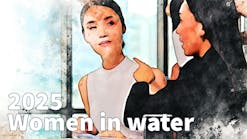Only three out of 15 countries in the Southern African Development Community (SADC) region are on track to achieve the 2015 Millennium Development Goal (MDG) target to halve the amount of people without basic sanitation.
This is according to a report by WaterAid entitled “From promise to reality: The urgent need for South African leaders to deliver on their water, sanitation and hygiene commitments”.
Figures produced for the report showed how 174 million people – almost two thirds of the population – do not have access to basic sanitation and over 100 million go without clean, safe water.
Report authors said that progress in increasing coverage has been stubbornly slow since 1990 and although some countries enjoy “near universal access”, in others investment is “insufficient to meet maintenance and growing population needs, leading to stalling or even falling levels of access”.
Data referring how close countries in the region are to the MDG target for drinking water and also sanitation showed only two are on track to meet the goals: Botswana and Sychelles.
Mozambique was listed as one of the worst performing countries, with 47% of the MDG water target met and 19% for sanitation, with also Tanzania (53% and 12%) and Madagascar (48% and 14%) listed, respectively.
As a result, WaterAid called for “significant change” from governments in the region to ensure that “everyone, everywhere will have access to improved water and sanitation facilities by 2030”.
The correlation between income and access to water and sanitation was documented. Countries classed with middle income economies (income per person between US$3,116 - $9,636) include Angola, Mauritius, Namibia, Seychelles and all have the highest levels of access.
Meanwhile, low income economies (less than $US785 per person) have much less advanced progress. These countries include Tanzania, Zimbabwe and Malawi.
Financial shortfalls were attributed as one factor for a lack of access, with the report calling for a “major resourcing of the sector”. Data showed existing financial flows in the each country and the annual resourcing needs to meet MDG goals, leaving the annual financing gap. For some countries this was as much as $542 million (Madagascar), $829 million (Tanzania) and $313 million (Zambia).
For Zambia, case study data showed a total investment requirement of US$466 million to achieve the MDG water and sanitation targets. Yet budgets allocated by the government in the Sixth National Development Plan were only 60% of this amount.
Meanwhile Botswana was praised for having “provided improved water access to everyone, bring being(being?) on track for the sanitation MDG and resourcing the sector to the extent that there is no financial gap”.
WaterAid also highlighted discrepancies between revenues collected in resource exports. Oil, gas, copper, diamonds, gold, platinum as well as other resources are the key drivers of economic growth in many countries. Yet the amount governments were receiving compared to their exports can leave a shortfall.
For example, the Mozambique Government was referenced as only receiving US$10 million a year in revenue from the natural exploitation of an estimated US$700 million of natural gas.
The report blamed a lack of transparency for the shortfall and said such a missing revenue source could be spent on public services, such as water and sanitation.
Dr David Lloyd Owen, managing director of consultancy Envisager, told WWi magazine: “Water Aid is right. Prioritised investment is needed. One of the reasons for poor access is that aid for basic water services has in fact fallen as a proportion of total official development assistance (ODA).
"ODA should not be about making nice jobs for consultants or opportunities to export shiny bits of kit, let along alone to fritter funds on prestige projects. It needs to be concerned with assisting in the development of an affordable, appropriate and robust infrastructure that can be locally manufactured and maintained.”
Owen added: “ODA is needed to encourage projects, to optimise the affordability of urban sanitation schemes and to put rural water and sanitation infrastructure into place. In urban Africa it needs to be connected to providing safe and affordable drinking water. People are willing to pay money for mobile phones. They are just as willing to pay for safe water and sanitation.”
John Garrett, senior policy analyst at WaterAid, said: “There is a lot of economic growth in the region but this is bypassing much of the population.”
Report recommendations included governments and NGOs to be more transparent in reporting budgets and spending on water, sanitation and hygiene. NGOs were also called to monitor progress in the sector and hold governments to account for their past commitments.
Read more
Harvested rainwater in South Africa harbors pathogens, finds new study According to research from the University of Stellenbosch in South Africa, pathogens are inhabiting harvested rainwater across the region, potentially posing a public health hazard, especially for children…
Algeria’s Magtaa supersized desalination plant: what’s the latest? If official dates are anything to go by, the 500,000 m3/day, mega size reverse osmosis plant in Magtaa, Western Algeria should have been finished and operating by now….
One of largest single-day water relief efforts in history to be held in March One of the largest single-day water relief efforts in history will be held on March 22, 2014, to commemorate World Water Day…




